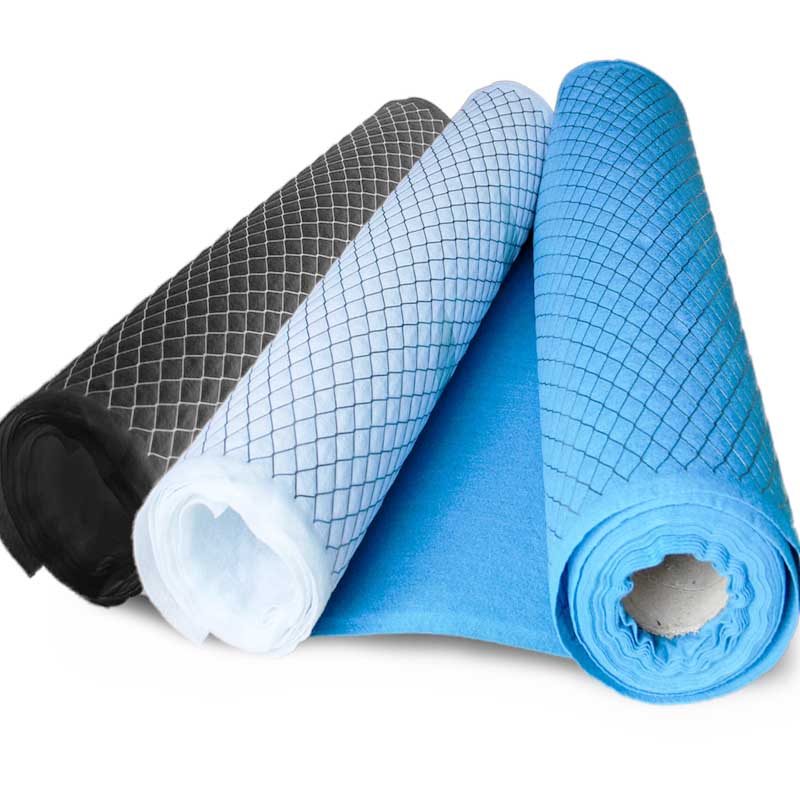 Air pre-filter materials are designed to capture larger particles, such as dust, debris, and larger contaminants, before the air enters the main filtration system. These pre-filters help extend the life of more fine and specialized filters downstream by preventing them from clogging prematurely. Common materials used for air pre-filters include:
Air pre-filter materials are designed to capture larger particles, such as dust, debris, and larger contaminants, before the air enters the main filtration system. These pre-filters help extend the life of more fine and specialized filters downstream by preventing them from clogging prematurely. Common materials used for air pre-filters include:
Using imported polyester fiber filter material, fibers with different melting points inside and outside are arranged in a three-dimensional structure with no orientation, and are made through processes such as needle punching, bonding, and hot melting. The product has a variety of characteristics such as tight fiber bonding, fracture resistance, resistance to detachment, corrosion resistance, wear resistance, and elastic recovery.
Polyester:
Polyester is a synthetic material that is widely used in air filter applications. It is known for its durability, resistance to moisture, and ability to capture larger particles effectively.
Polyurethane Foam:
Polyurethane foam is a porous and resilient material commonly used in pre-filters. It captures larger particles and can be easily cut or shaped to fit various filter configurations.
Fiberglass:
Fiberglass is another common material for air pre-filters. It is lightweight, has good filtration properties, and is often used in disposable filters.
Synthetic Fibers:
Various synthetic fibers, such as non-woven polypropylene or other polymer-based materials, are used in the production of pre-filters. These materials are chosen for their filtration efficiency and resistance to moisture.
Metal Mesh:
Metal mesh filters are often used as pre-filters in industrial applications. The mesh captures larger particles, and the metal construction allows for durability and ease of cleaning.
Activated Carbon:
In some cases, pre-filters may incorporate activated carbon to help adsorb odors and certain gases in addition to capturing larger particles. This is more common in specialized applications where both particle and gas-phase filtration are needed.
Product Application Examples
HVAC Systems
Pre-filters protect HVAC systems by capturing large particles like dust, extending the life of main filters and improving efficiency.
Industrial Air Filtration
Used in factories and clean rooms, pre-filters protect machinery and processes from airborne contaminants, enhancing equipment lifespan.
Air Purifiers
In residential and commercial air purifiers, pre-filters trap larger particles, allowing main filters to focus on finer pollutants, improving air quality.
Automotive Engines
In vehicles and machinery, pre-filters prevent larger debris from entering the engine's air intake, improving performance and reducing wear.
Respirators
Pre-filters in respirators protect users from large particles, extending the life of finer filters that capture smaller, more harmful particles.
Aerospace
In aircraft, air pre-filters protect sensitive systems from dust and debris, ensuring clean air for both passengers and equipment.
Data Centers
Pre-filters in server rooms prevent dust from entering critical equipment, maintaining reliability and longevity of electronic systems.
Product Features:
1. High Particle Retention Capacity
Quality pre-filters capture 80-90% of particulates ≥10μm while maintaining low pressure drop (typically 20-30 Pa at 1m/s face velocity). Synthetic fiber mats demonstrate superior particle loading capacity (up to 300g/m²) compared to natural fibers.
2. Optimal Airflow Resistance
Advanced materials maintain airflow rates of 0.8-1.2 m³/s·m² with initial resistance below 50 Pa. Non-woven polyester blends achieve 15-25% better airflow than glass fiber counterparts at equivalent filtration efficiency levels.
3. Moisture Resistance
Hydrophobic treatments enable ≤3% water absorption (ASTM D570) while maintaining structural integrity at 95% RH environments. Synthetic media retain 98% of dry-state efficiency when exposed to moisture.
4. Temperature Tolerance
Premium materials operate continuously at 80-120°C (polypropylene-based) or up to 190°C (PTFE-coated), with ≤2% dimensional change after 500 thermal cycles between -40°C and peak temperature.
5. Mechanical Durability
Reinforced substrates withstand 500+ flex cycles (ASTM D2176) with <10% tensile strength loss. Needle-punched nonwovens exhibit burst strengths exceeding 300 kPa (ISO 13938-1) for long service life.
6. Chemical Compatibility
Engineered polymers demonstrate resistance to pH 2-12 solutions with <5% weight change after 168hr immersion (ASTM D543). Fluorocarbon treatments provide oil repellency (≥7 grade per AATCC 118) without compromising porosity.
Merchant FAQ
Q: What is an air pre-filter material?
A: An air pre-filter material is a coarse filtration layer designed to capture large particles before air passes through the primary filter, extending its lifespan.
Q: What are common types of air pre-filter materials?
A: Common types include polyester mesh, foam, non-woven fabrics, and fiberglass, each suited for different particle sizes and environments.
Q: How does an air pre-filter improve HVAC efficiency?
A: By trapping dust and debris early, it reduces clogging in main filters, maintaining airflow and lowering energy consumption.
Q: Can air pre-filters be washed and reused?
A: Some materials like polyester or foam are washable, while others (e.g., fiberglass) may require replacement. Check manufacturer guidelines.
Q: Where are air pre-filters typically used?
A: They’re installed in HVAC systems, air purifiers, industrial vents, and automotive air intakes for preliminary filtration.